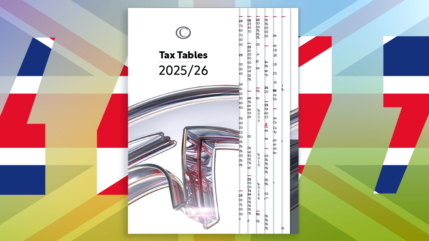The abolition of the Lifetime Allowance (LTA) in the recent Spring Budget came as a bombshell. While it’s undoubtedly good news for people with substantial pension savings or those wishing to boost them, who will no longer be hit by tax charges of up to 55%, as always with financial regulations it’s the details rather than the broad announcements that count.
Unfortunately, a lot of those details were not provided at the time of the Budget, leaving a number of unanswered questions. Since then, further guidance has revealed more of the nitty gritty of this controversial measure, culminating in the publication of the Finance Bill on 23 March.
Before moving on, just to clarify while the LTA charge is being abolished from 6 April, because the LTA is included in so many different regulations, removing the LTA itself from the statute books won’t happen until April 2024.
First the good news
Previously, a person who exceeded the current LTA of £1,073,100 by £300,000 and took all of their £1,373,100 pension pot as a lump sum would have been hit by a 55% tax charge amounting to £165,000. If they took the same sum as pension income, the excess LTA charge would have been £75,000 (25% of the £300,000). They would then have paid income tax on this pension income at their marginal rate. Any pension savings above the LTA not used by the age of 75 would have been subject to taxation at 25%.
Benefit crystallisation events
Abolishing the LTA charge will make what are called benefit crystallisation events (BCEs) essentially redundant. These are scenarios that trigger a test by the pension provider against the LTA. Among the most common BCEs are; moving pension assets held under money purchase arrangements into drawdown, death, payment of certain lump sums, reaching the age of 75 and not having drawn pension benefits and/or having funds in drawdown.
People who previously withdrew money from their pension and designated the non tax-free element to drawdown and would have been tested for a second time at age 75 will now not be tested at all.
Oddly, despite the LTA charge disappearing on 6 April, HMRC expects pension scheme administrators to continue to operate lifetime allowance checks when paying benefits and to issue benefit crystallisation statements until such time as all references to the LTA are removed from pension tax legislation.
Tax-free lump sums
Currently, most people can take 25% of their pension savings up to the LTA as a tax-free lump (known as a pension commencement lump sum or PCLS), amounting to a maximum of £268,275. However, some people have what’s called LTA protection. As successive governments reduced the level at which the LTA tax charges were applied, in order not to penalise existing savers with a tax charge when they came to access their pension, they were allowed to keep their LTA at the previous higher level.
The Chancellor decided to freeze the PCLS limit at 25% of the current LTA level, with no mention of an end date to the freeze. With inflation still running at more than 10%, this represents a significant cut in real terms.
LPA protections
The only exceptions to the £268,275 limit are if an individual holds valid LTA or PCLS protection.
This was confirmed the day after the Budget when HMRC issued further guidance. This stated that people with a protected right to a higher PCLS “will continue to be able to access this right.”
Consequently, someone with a protected LPA of £1.8m can continue to take a tax-free lump sum of up to £450,000, significantly more than the standard PCLS of £268,275.
Members of pension schemes with certain other valid protections will also be able to accrue new pension benefits, join new arrangements, or transfer to other pension schemes without losing their protection. However, these entitlements will only be available to people who applied for protection before 15 March 2023.
Under existing pension legislation, some forms of LTA protection allow pension scheme members to add to their pension while keeping their LPA protection, but others don’t. The ins and outs of which types of protection allow individuals to continue to make contributions without losing their protected LPA are beyond the scope of this article and are best discussed with a Financial Adviser.
Lump sum taxation
One point that may have been missed: while under the current rules individuals are taxed at 55% on any lump sum amount taken above the LTA, the measures announced in the Budget don’t mean that individuals who take a lump sum save this amount of tax. Instead of being taxed at 55%, they’ll be charged at their marginal rate of income tax, which at 45% for an additional rate taxpayer, though lower is not massively so. This will also apply to other types of lump sum payments, including; serious ill-health lump sum (SIHLS), defined benefits lump sum death benefit (DBLSDB), and uncrystallised funds lump sum death benefit (UFLSDB).
Drawdown
Where income is taken as pension income, including drawdown, there will no longer be any LTA excess charge of 25% when pension benefits above the LTA are taken, with individuals being taxed at their marginal rate on the income received.
Unused allowances
If you haven’t used up this year’s pension allowance of £40,000 it may still be beneficial to do so by 5 April, especially if you can use up unused allowances from 2019/20 – from 6 April this year’s allowance will be lost for good. But remember, you can only carry forward unused allowances if you fully use up the allowance in the current tax year.
Against that, wating until the new tax year will allow you to increase contributions to £60,000 (including tax relief) – a 50% rise. You will still be able to carry forward any unused allowances from the previous three tax years i.e. 2020/21, 2021/22 and 2022/23.
If you haven’t saved anything into your pensions in the past three years, next year you could contribute up to £180,000. (3 x £40,000 + £60,000).
Other potential financial planning implications
If your pension pot is more than the LTA of £1,073,100, unless you need the money urgently, holding off withdrawing money from your pension savings until 6 April could save you a significant amount in tax.
Previously if you were approaching the LTA and your partner wasn’t, it could have been beneficial to redirect contributions into their pension to avoid a tax charge. This is no longer the case.
Getting rid of the LTA could encourage you to continue working or to return to work. Alternatively, if it means reaching your pension pot target sooner, you may decide to retire earlier.
Raising the Money Purchase Annual Allowance (MPAA) from £4,000 to £10,000, another measure announced in the Budget, may also be a contributory factor in this decision. This is the amount that someone who has previously flexibly accessed their money purchase (defined contribution) pension is allowed to contribute to their money purchases/defined contribution pension.
Putting money into a pension could become more attractive from an inheritance tax (IHT) perspective. However, this depends on pension savings remaining outside people’s estate for IHT purposes. Bear in mind though that once these benefits are distributed, recipients will be subject to income tax at their marginal rate. For additional rate taxpayers that’s 45%, compared to 40% for IHT.
Although it will now be possible for people who exceed the current LTA to make big tax savings, don’t forget that any income drawn from a pension in the future will to be subject to tax.
Although saving into a pension is now undoubtedly more attractive, it would be unwise to put all your eggs in one basket. The benefits of Individual Savings Accounts (ISAs), where all income and capital gains are free of tax should not be overlooked, particularly at a time when fiscal drag is pulling more and more people into higher tax brackets.
Summing up
Jeremy Hunt’s decision to abolish the lifetime allowance amounts to the biggest shake-up in UK pensions for many years. Arguably, it restores pensions to their rightful place in the UK financial system. On the other hand, because those with significant pension savings are set to benefit most, it’s hugely controversial. The elephant in room as far as financial planning is concerned, of course, is that should Labour get into power at the next election they have pledged to reverse the current government’s decision.













